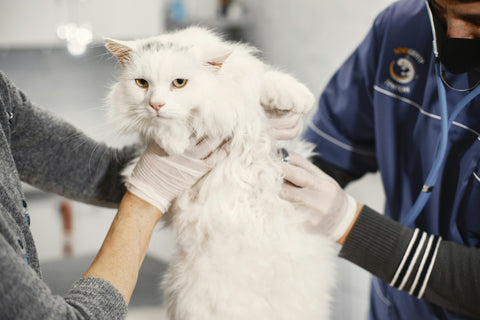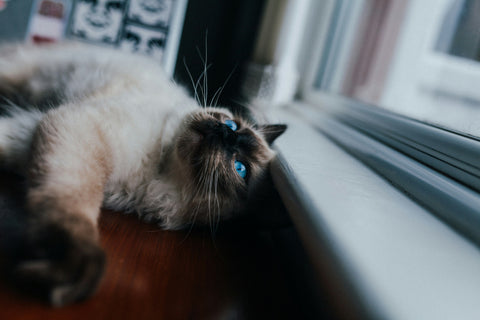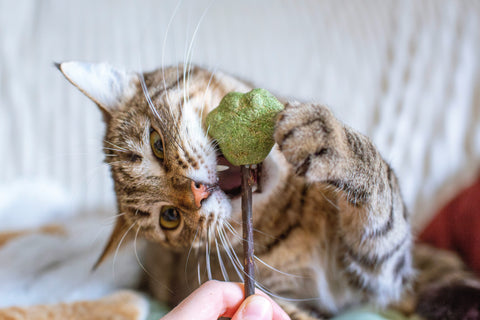The Ultimate Answer: How Often Cats Need Vet Check-ups
Regular veterinary check-ups are vital for your cat’s health, helping to detect and address potential issues before they escalate into serious conditions. Cats’ needs evolve with age, from kitten vaccinations and growth assessments to senior exams involving blood work and mobility evaluations. Since cats are notorious for hiding signs of illness, routine vet visits are crucial for early detection, allowing for timely intervention and preventing more serious health problems down the road. This guide outlines how often your cat should see the vet based on their age, empowering you to create a tailored health plan that supports a lifetime of well-being, comfort, and companionship.
Vet Check-up Guidelines for Every Stage of Your Cat’s Life
Cats require different levels of care at each stage of their lives, from playful kittens to wise, senior companions. Tailored veterinary care ensures that your cat’s needs are met at every age, establishing a foundation for long-term health. Let’s delve into the specifics:

Newborn Kittens (0-6 months)
Frequency: Every 3 to 4 weeks until 16 weeks old.
What Happens During Visits:
- Clinical Examinations: Regular vet visits ensure your kitten’s growth and development are on track.
- Vaccinations: Kittens are vulnerable to various diseases, so vaccinations are crucial to ensure they grow into healthy cats.
- Parasite Prevention: Regular checks for fleas, ticks, and worms are important during the early stages of life.
Key Milestones:
- Discussions about spaying or neutering.
- Advice on socialization, training, and nutrition.
- Early care ensures your kitten has a strong foundation for a healthy life.

Older Kittens (6-12 months)
Frequency: Every 3 to 6 months.
What Happens During Visits:
- Vaccination Updates: Ensure your kitten is up-to-date on necessary shots.
- Dental Health Checks: By this age, your cat’s teeth may begin to show early signs of wear, so regular dental checks are important.
- Behavioural and Health Concerns: Some behavioural and health issues may start to surface as they transition into adulthood.
Key Focus Areas:
- Adjusting their diet and training techniques to accommodate their changing needs.
- Monitoring their weight and growth to ensure a smooth transition into adulthood.

Young Adult Cats (1-6 years)
Frequency: Annually
What Happens During Visits:
- Physical Examinations: A thorough exam helps catch early signs of any developing health conditions.
- Vaccine Updates: Annual boosters keep your cat protected against common diseases.
- Dental Health Assessments: Regular check-ups ensure your cat’s teeth and gums stay healthy.
Key Focus Areas:
- Preventive care, such as parasite checks, flea and tick prevention, and screenings for any emerging health concerns.
- Discuss diet and lifestyle recommendations to maintain optimal health during their adult years.

Mature Adult Cats (7-10 years)
Frequency: Twice a year
What Happens During Visits:
- Blood Tests and Urinalysis: These tests help detect age-related conditions like kidney disease or diabetes early.
- Dental Evaluations: As your cat ages, oral health becomes even more important to prevent dental disease, which can affect overall health.
Key Focus Areas:
- Identifying and addressing any early signs of chronic conditions, such as arthritis or obesity.
- Diet adjustments may be necessary to help maintain a healthy weight, joint health, and energy levels.

Senior Cats (11-14 years)
Frequency: Twice a year or more, depending on health.
What Happens During Visits:
- Monitoring Chronic Conditions: Senior cats often deal with issues like arthritis, kidney disease, or diabetes. Regular check-ups help keep these conditions in check.
- Screening for New Health Issues: Catching potential issues early increases the likelihood of effective treatment.
- Nutritional Adjustments: Senior cats may need specialized diets to support their aging bodies.
Key Focus Areas:
- Ongoing management of chronic conditions such as diabetes, hyperthyroidism, and kidney disease.
- Nutritional or medical supplements may be needed to ensure your senior cat gets the nutrients required for aging gracefully.

Geriatric Cats (15+ years)
Frequency: Every 2 to 3 months.
What Happens During Visits:
- Complete Physical Exams and Blood Work: Geriatric cats need thorough check-ups to identify any developing issues quickly.
- Pain Management: Discussions on how to manage joint pain and mobility issues to keep your cat comfortable.
- Mobility Assistance: If necessary, the vet may recommend supplements or medications to help your cat move more easily.
Key Focus Areas:
- Providing end-of-life care to ensure comfort, including palliative care options if your cat’s health is declining.
- Adapting home environments to meet the physical changes your senior cat may be experiencing, such as installing low-access litter boxes or providing soft bedding for joints.
When to Take Your Cat to the Vet Beyond Routine Check-ups
In addition to regular check-ups, certain signs or changes in your cat’s behaviour or health may indicate that a visit to the vet is needed sooner rather than later. Watch for these warning signs:
-
Changes in Eating or Drinking Habits: Unexplained weight loss or sudden increase in drinking and urination can be signs of kidney problems, diabetes, or gastrointestinal disorders.
-
Lethargy or Behavioural Changes: Unusual lethargy or aggression could be a response to pain, stress, or illness.
-
Grooming Habit Changes: If your cat is over-grooming or neglecting grooming, it may indicate skin conditions, allergies, or stress.
-
Vomiting or Diarrhoea: Frequent vomiting or diarrhoea can lead to dehydration and should be addressed quickly.
-
Breathing Issues: Abnormal breathing or persistent coughing might suggest respiratory issues.
-
Eye or Ear Problems: Redness, swelling, or discharge in the eyes or ears could signal an infection that needs prompt treatment.
-
Litter Box Changes: Difficulty urinating or defecating can point to urinary tract infections or blockages.
-
Injuries or Trauma: Even minor injuries should be seen by a vet to avoid complications.




Comments (0)
There are no comments for this article. Be the first one to leave a message!